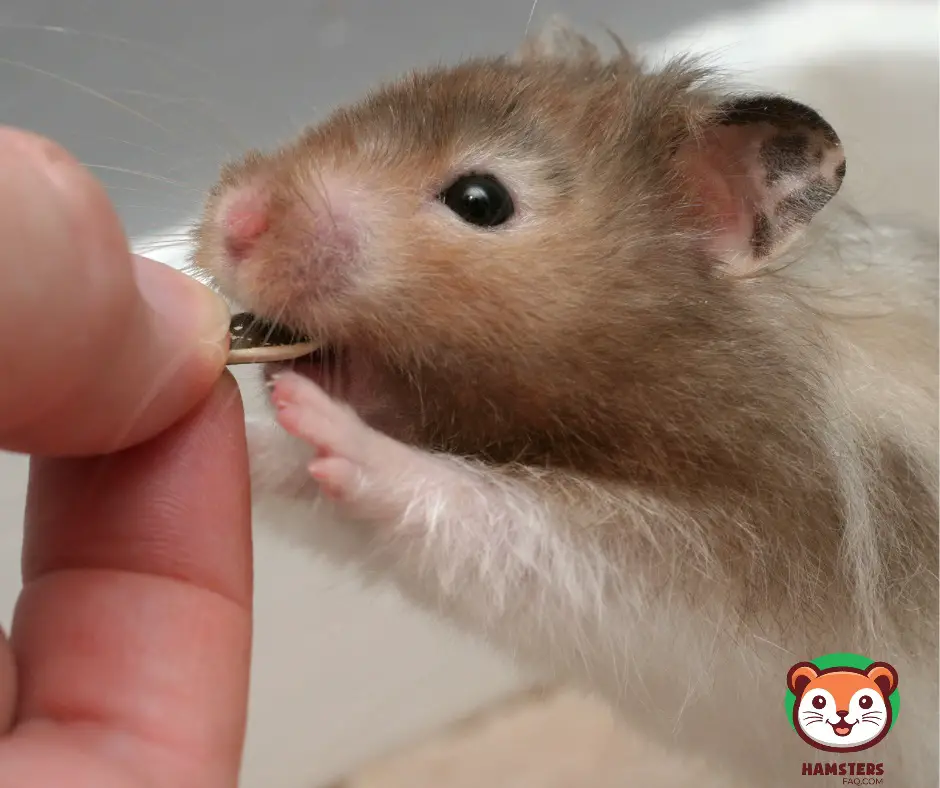Hamsters are small and adorable, but they’re also high-maintenance pets. You need to make sure that your hamster has everything it needs—food, water, and a clean cage—to stay healthy.
One of the most important things you can do is feed your hamster the right amount of food each day. That’s where this guide comes in. We’ll show you how much food you should give your hamster each day and how often it should eat it.
How Much Do You Feed a Hamster a Day?
A rule of thumb is that you should feed a hamster 12 grams of food daily, but there are other factors to consider.
Hamsters have different body sizes and metabolisms, so they need different amounts of food based on their size and activity level.
For example, dwarf hamsters are much smaller than Syrian hamsters, so dwarf hamsters will generally be fed less than Syrians. The same goes for other types of hamsters like Chinese and Roborovski dwarf hamsters.
Hamsters also tend to be more active when they’re outside their cage exploring new things or socializing with humans or other animals. So if your pet is spending most of its time out of its cage (and not eating), you may want to reduce its daily intake by about 50%.
Checkout this hamster feeding chart below by Oxbowanimalhealth
| Veggies and Green | Grains | Fruits | Proteins | Fats |
| Lettuce | Cooked brown rice | Apple (no seeds) | Hard-boiled eggs | Pumpkin seeds |
| Kale | Whole-grain cereal | Cantaloupe | Mealworm | Sunflower seeds |
| Dandelion green | Cooked whole-wheat pasta | Banana | Crickets | Pistachios |
| Spinach | Oats | Blueberries | Cooked chicken | Pecans |
| Cucumber | Barley | Peaches (no pit) | Dubai roaches | Brazil nuts |
| Frequency and Amount | ||||
| Daily 1-2 tsp. | Daily 0.5-1 tsp. | Every other day < 1tsp. | 2-3 times/week 0.5 tsp. | 2-3 times/week 0.5 tsp |
What Are the Healthiest Foods for Your Hamster?
The main types of food that you should consider feeding your pet include:
1. Veggies
Vegetables are rich in fiber and vitamins, making them great for keeping your hamster healthy and happy. Some good vegetables include carrots, celery, cucumber, lettuce (or any other leafy greens),
If you want to give your hamster veggies as a snack or treat, make sure that they are cut up into small pieces so that they can be swallowed easily.
2. Yogurt
Plain yogurt is another good source of protein for growing hamsters who need extra nutrition when they’re nursing babies or recovering from illness or injury.
You can feed your hamster plain yogurt by mixing in some fresh fruit like berries or bananas to add flavor without adding sugar (which will make the yogurt spoil more quickly).
3. Cheddar Cheese
Cheddar cheese has lots of protein, calcium, and phosphorus which are all important nutrients for growing hamsters. It also has some fat so it’s a healthy food option for adult hamsters as well as babies.
4. Blackberries
Blackberries are rich in antioxidants and vitamin C, which help protect the body against diseases such as cancer. They also contain iron and calcium, which improves bone strength and prevents osteoporosis.
Blackberries can be fed raw or cooked. They can also be frozen into ice cubes for your hamster to enjoy during hot weather.
5. Kiwi
Kiwi is a sweet and delicious fruit that is known for its high fiber content. It is also rich in Vitamin C, which helps strengthen your hamster’s immune system. One of the best ways to feed your hamster kiwi is by cutting it into small pieces and then feeding it as a treat.
6. Apples
Apples are one of the healthiest foods you can feed your hamsters because they are high in fiber and vitamin C as well as other essential nutrients like potassium and magnesium.
Apples also contain antioxidants that help fight off free radicals that can cause disease or even cancer over time so make sure to give this fruit to your pet regularly.
7. Banana
Bananas are high in potassium and low in sodium, making them very beneficial for hamsters with heart problems or kidney disease.
They also contain vitamins B6, C, and E as well as magnesium, manganese, iron, and copper. If you have an adult hamster that has never been exposed to bananas before, start off by giving him one slice at a time until he gets used to them before giving him more slices at once.
8. Grapes
Grapes are a great food for hamsters, as they are high in sugar and low in protein. They can also cause diarrhea if given too much, so they need to be fed sparingly.
Grapes should never make up more than 10% of your hamster’s diet. This is because of their high sugar content, which can upset their tummies.
9. Seedless pears
The seedless pears are one of the best food for your hamster. It has low calories, no sugar, and zero fat. These are very good for the health of your pet because it contains vital nutrients such as Vitamin A, C, K, and B6.
In addition to that, it also contains fiber and antioxidants which help to keep the immune system healthy and strong.
10. Pellets
Pellets are one of the most common types of food for hamsters because they provide a balanced diet by containing all the nutrients that your hamster needs to stay healthy. Pellets are also easy to digest and will not cause any digestive problems in your pet.
The only problem with pellets is that they can be expensive if you buy them at the store or online; however, if you like making your own homemade food then pellets may be right up your alley since they are easy to make at home with just a few ingredients.
Conclusion
Whether you’re considering getting a hamster, or any pet, for that matter, it’s always a good idea to be prepared.
Even if you’re doing plenty of research before committing, there could still be something you don’t know.
One great way to ensure your new pet will have everything he or she needs is to create a basic schedule of what to feed them and how much. This can go a long way toward ensuring their health.

